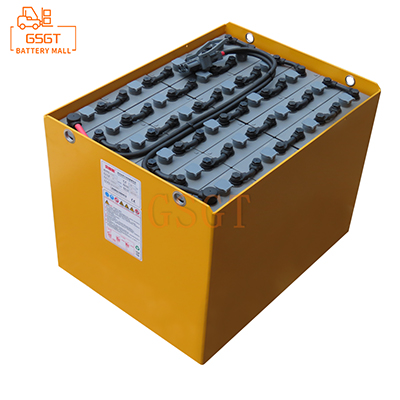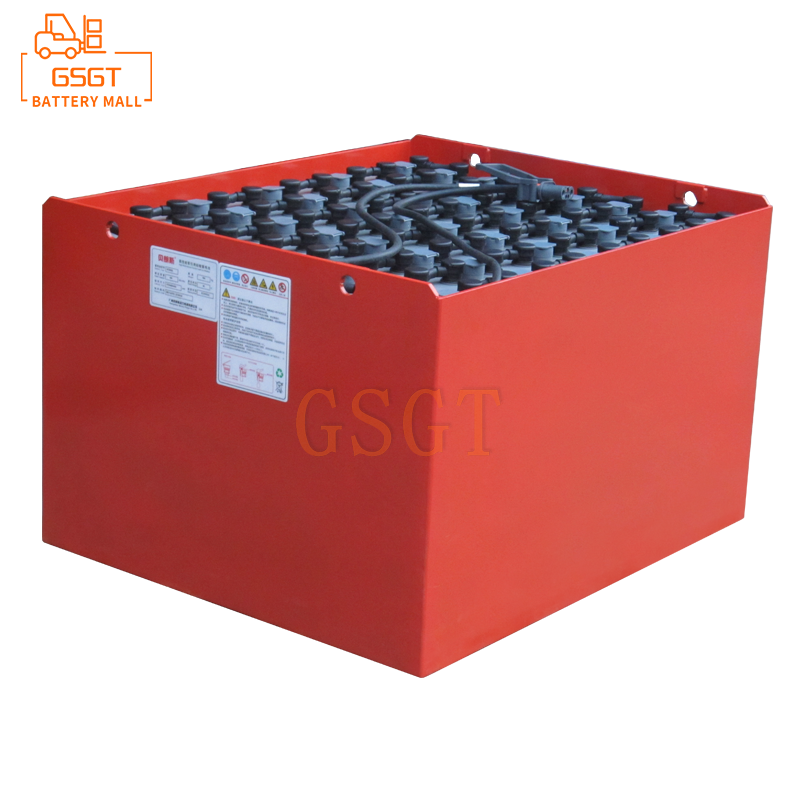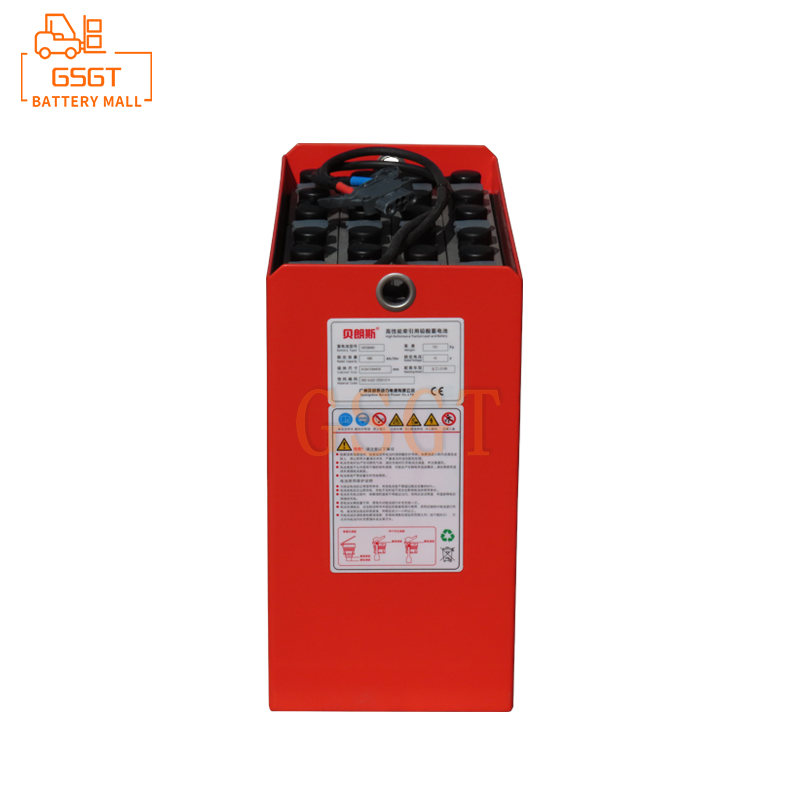Time:2025-03-07 15:53:08
Browse:262
In-depth analysis: Forklift lead-acid battery vulcanization elimination, from principle to practical operation steps overviewIn the daily use of forklift, lead-acid battery is the main power source, and its performance directly affects the working efficiency and service life of forklift. Battery vulcanization is a common and difficult problem for lead-acid batteries, which can even lead to battery obsolescence in serious cases. It is very important to understand the principle of lead-acid battery vulcanization and to master the effective elimination method to ensure the stable operation of forklift and reduce the operating cost.
Detailed explanation of lead-acid battery vulcanization principle
The work of the lead-acid battery is based on a reversible electrochemical reaction between the active material on the positive and negative plates and the sulfuric acid in the electrolyte. In the normal charge and discharge process, the lead dioxide on the positive plate and the spongy lead on the negative plate will react with sulfuric acid to form lead sulfate and water.
However, when the battery is in a state of loss of power for a long time, insufficient charging or the electrolyte level is too low, the lead sulfate on the negative plate can not be completely converted into spongy lead and sulfuric acid, and some lead sulfate will form coarse, hard and difficult to dissolve lead sulfate crystals on the surface of the plate. These crystals gradually accumulate, covering the plate active substance, preventing the electrolyte from fully contacting the active substance, resulting in an increase in the internal resistance of the battery and a decrease in capacity, which is the phenomenon of battery vulcanization. As the degree of vulcanization deepens, the performance of the battery deteriorates rapidly until it cannot work normally.
Harm of vulcanization to lead-acid batteries of forklift trucks
After vulcanization, the most intuitive performance of the forklift lead-acid battery is that the capacity is significantly reduced. Originally, the full charge can meet the working time of the forklift truck for 8 hours, but after vulcanization, it may only work for 3-4 hours, which seriously affects the continuous operation ability of the forklift truck, and frequent charging greatly reduces the work efficiency. At the same time, the internal resistance of the battery increases, at the moment of starting the forklift, a larger current is required, and the vulcanized battery is limited by large internal resistance and output current, which will cause the forklift to start difficult or even unable to start. Moreover, the vulcanization causes the local heat of the battery to be serious, shortens the battery life, and increases the cost of replacing the battery. According to statistics, the lead-acid batteries of forklift trucks scrapped in advance due to vulcanization problems account for 40%-50% of the total battery scrapped.
Actual operation steps for vulcanization elimination
1. Prepare
First, ensure that the operating environment is well ventilated to avoid the danger of hydrogen buildup caused by the battery charging process. Prepare professional battery detectors, chargers, hydrometers, distilled water, protective gloves, goggles and other tools and protective equipment. At the same time, check the appearance of the battery to be handled to see whether the shell is cracked or the electrolyte leaks. If such problems exist, repair them first or carefully evaluate whether they are worth handling.
2. Test the degree of vulcanization
The battery detector is used to detect the battery comprehensively and measure the open circuit voltage, internal resistance and other parameters of the battery. Under normal circumstances, when the forklift lead-acid battery is fully charged, the open circuit voltage should be 2.1V-2.2V/single cell (taking the 12V battery as an example, composed of 6 single cells, the total open circuit voltage is about 12.6V-13.2V), and the internal resistance is generally between a few milliohms to tens of milliohms. If the open circuit voltage is obviously lower than the standard value, and the internal resistance is greatly increased, the battery can be initially judged to have vulcanization phenomenon. Further by measuring the specific gravity of the electrolyte to assist judgment, the normal electrolyte specific gravity of 1.26-1.28g /cm³ (25 ° C), vulcanized battery electrolyte specific gravity is often low.
3. Mild vulcanization elimination (pulse repair method)
For lightly vulcanized batteries, the effect of pulse repair is remarkable. Connect the pulse repair meter to the positive and negative terminals of the battery, and set appropriate repair parameters. The general pulse frequency is 1000Hz-3000Hz, and the pulse width is 10μs-50μs. During the repair process, the high frequency pulse current emitted by the repair instrument can break the lead sulfate crystal on the surface of the plate, so that it can be re-dissolved into the electrolyte, and restore the battery activity. The sustained repair time depends on the degree of battery vulcanization and is usually 8-12 hours. During the repair process, the battery detector can be used every 2-3 hours to detect battery parameters and observe the change of battery status. When the open circuit voltage gradually increased, the internal resistance decreased, and the specific gravity of the electrolyte rose, it showed that the repair had a certain effect.
4. Moderate vulcanization elimination (overcharge method)
If the degree of battery vulcanization is moderate, overcharge method should be used. First charge the battery with the normal charging current to the sufficient state, at this time the battery voltage reaches about 2.4V/ cell, and the electrolyte begins to bubble in large numbers. After that, reduce the charging current to 1/3-1/4 of the normal charging current and continue charging for 5-10 hours. In the process of overcharging, the continuous bubbles will impact the lead sulfate crystal on the surface of the plate, causing it to gradually dissolve. During the overcharging process, pay close attention to the battery temperature, which should not exceed 45 ° C. If the temperature is too high, the charging should be suspended, and then continue after the temperature decreases. After the end of overcharging, let the battery stand for 1-2 hours, and test the battery parameters again to evaluate the vulcanization elimination effect.
5. Heavy vulcanization elimination (chemical repair method)
When the battery vulcanization is serious and the above method is difficult to work, chemical repair method can be tried. However, this method needs to be performed with caution, because the chemical reagents may cause some damage to the battery. First, use a hydrometer to suck out most of the electrolyte in the battery, leaving about 10-20mm of the height of the electrolyte in the battery. Then, according to the battery capacity, the special lead-acid battery repair solution is configured in proportion (the main components of the general repair solution are sulfuric acid and some additives, such as organic acids, active agents, etc.), and slowly injected into the battery. Let the battery stand for 2-3 hours to allow the repair solution to fully penetrate the plate. After that, use a small current (1/10-1/5 of the normal charging current) to charge for 8-12 hours. After charging, use a hydrometer to suck out the repair solution, and then flush the inside of the battery with distilled water 2-3 times until the sucked liquid is neutral. Finally, add an appropriate amount of standard electrolyte, fully charge the battery with normal charging mode, and test whether the battery performance is restored.
6. Check and maintain the repair
No matter which repair method is used, the battery should be fully tested after the repair is completed. Use the battery detector again to measure the open circuit voltage and internal resistance to ensure that they return to the normal range. At the same time, check the specific gravity of the electrolyte, if the specific gravity does not meet the standard, it can be adjusted by adding distilled water or sulfuric acid. In daily use, it is necessary to develop good charging habits, avoid excessive discharge of the battery, and regularly conduct balanced charging maintenance of the battery to prevent the recurrence of the vulcanization problem.
Through in-depth understanding of the principle of lead-acid battery vulcanization of forklift trucks, and elimination treatment in strict accordance with the above practical operation steps, the battery life can be effectively extended, the operating cost of forklift trucks can be reduced, and the efficient and stable operation of forklifts can be guaranteed.

$3405

$9525

$865

$770

MESSAGE
Professional And Efficient
Security
Affordable Price
Professional Services